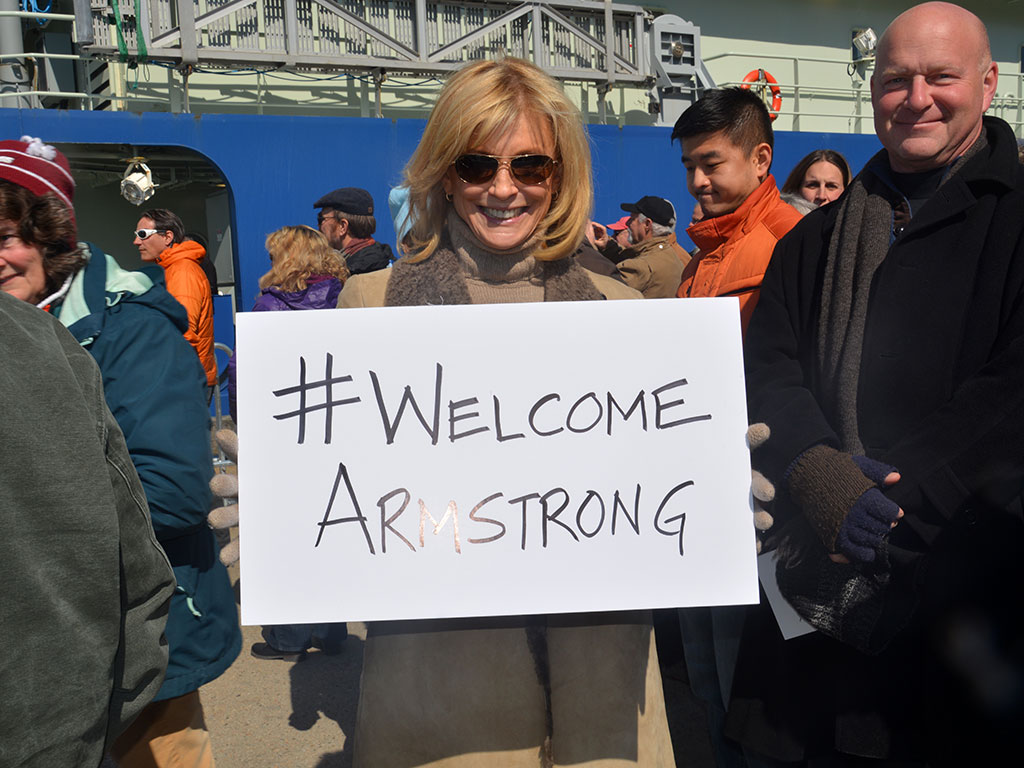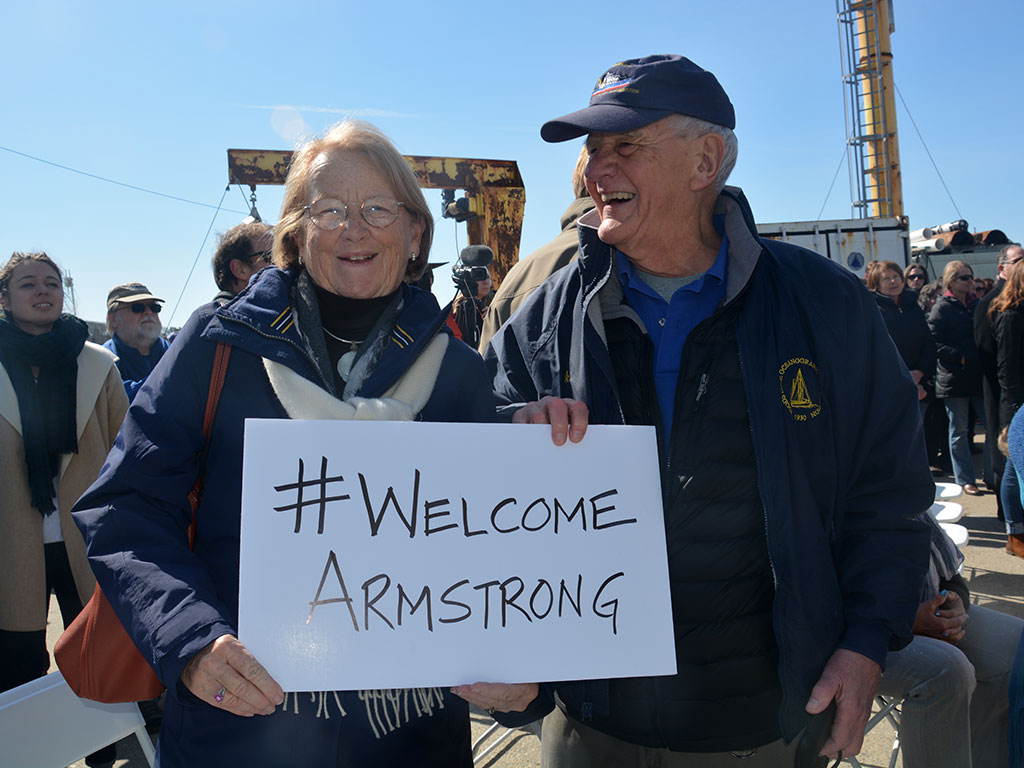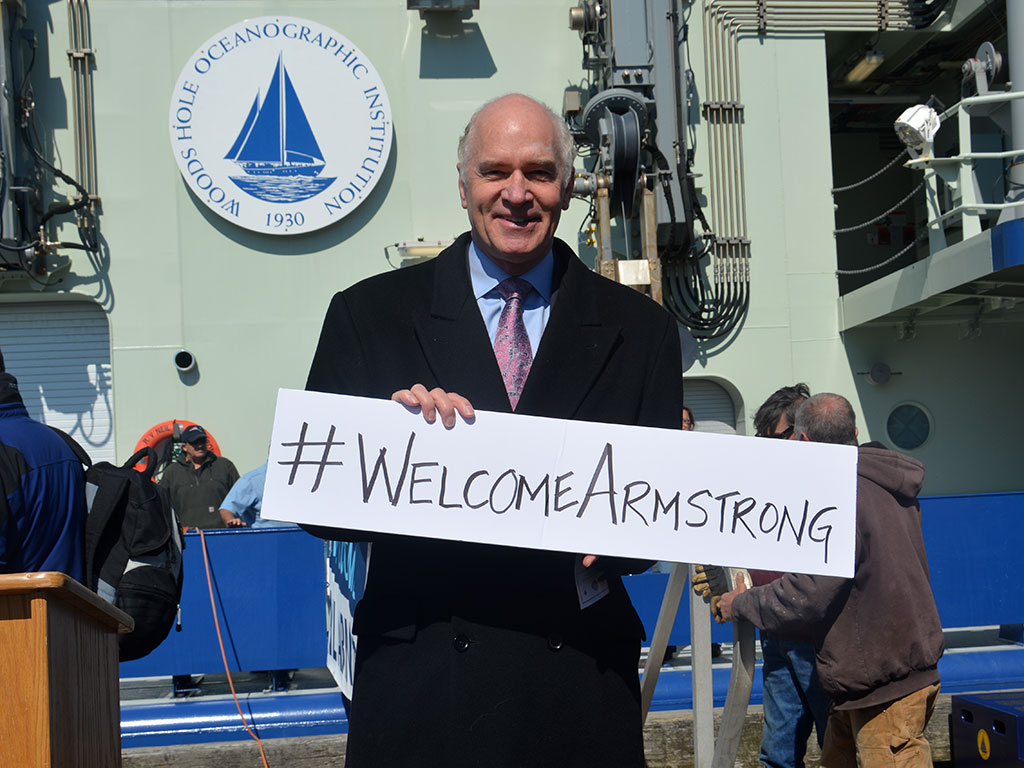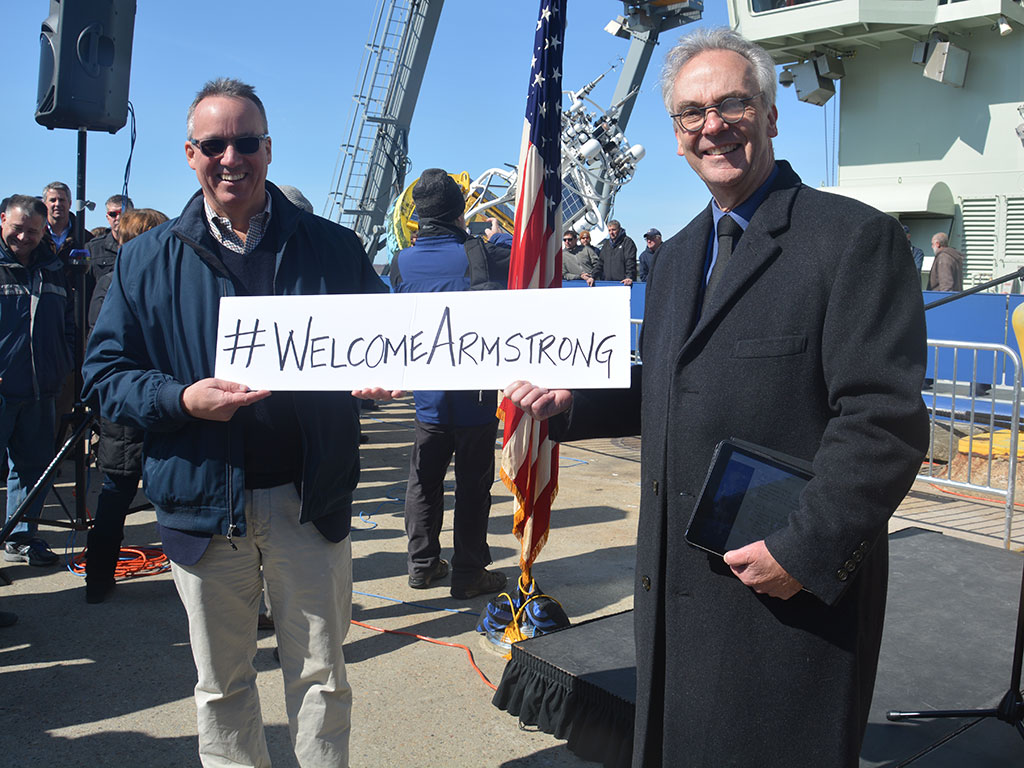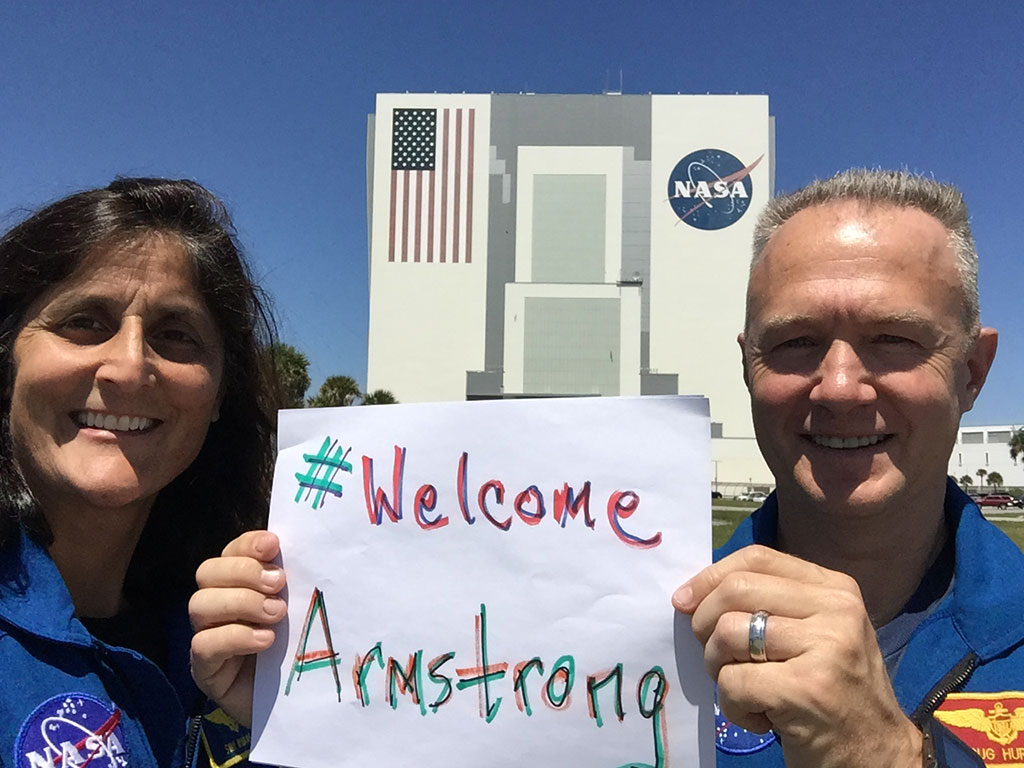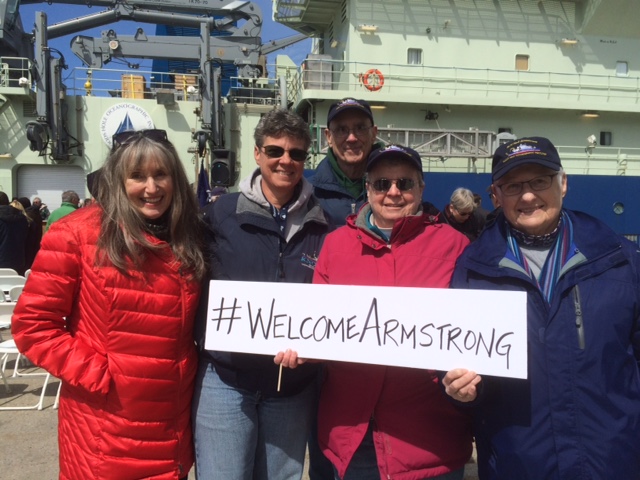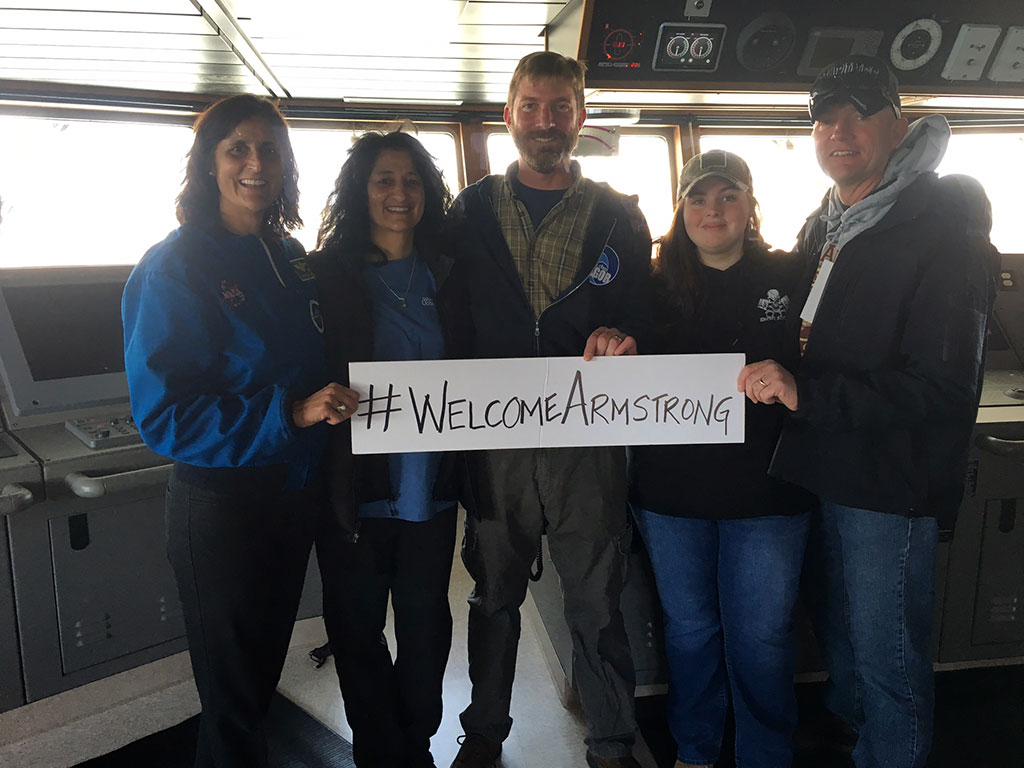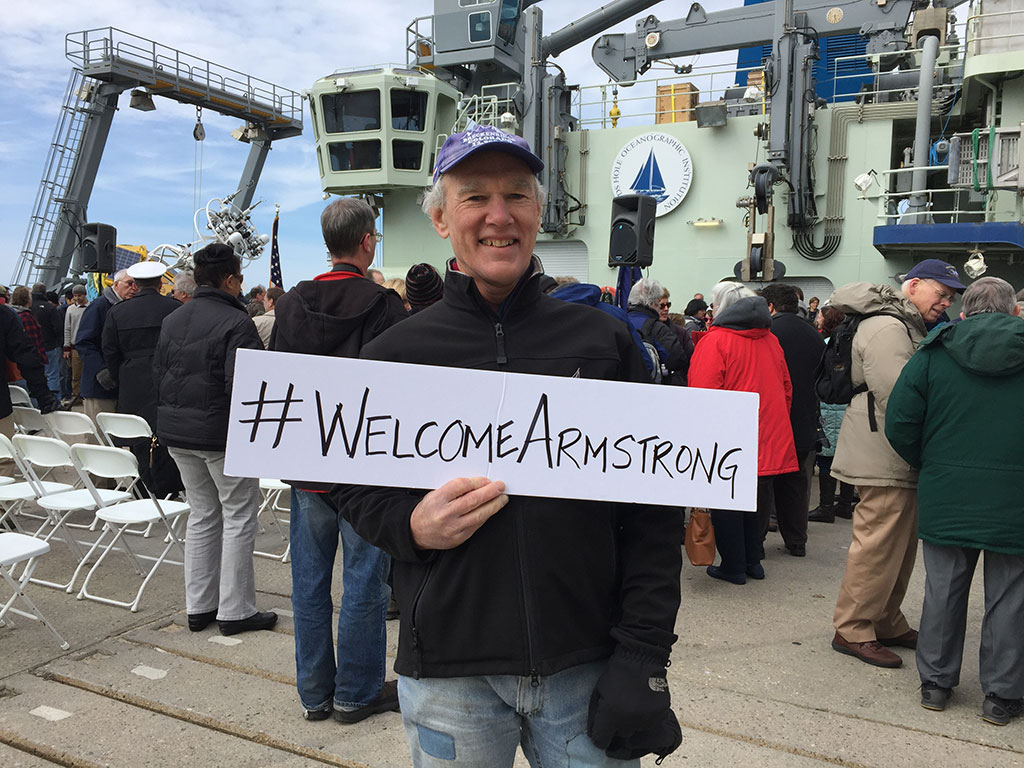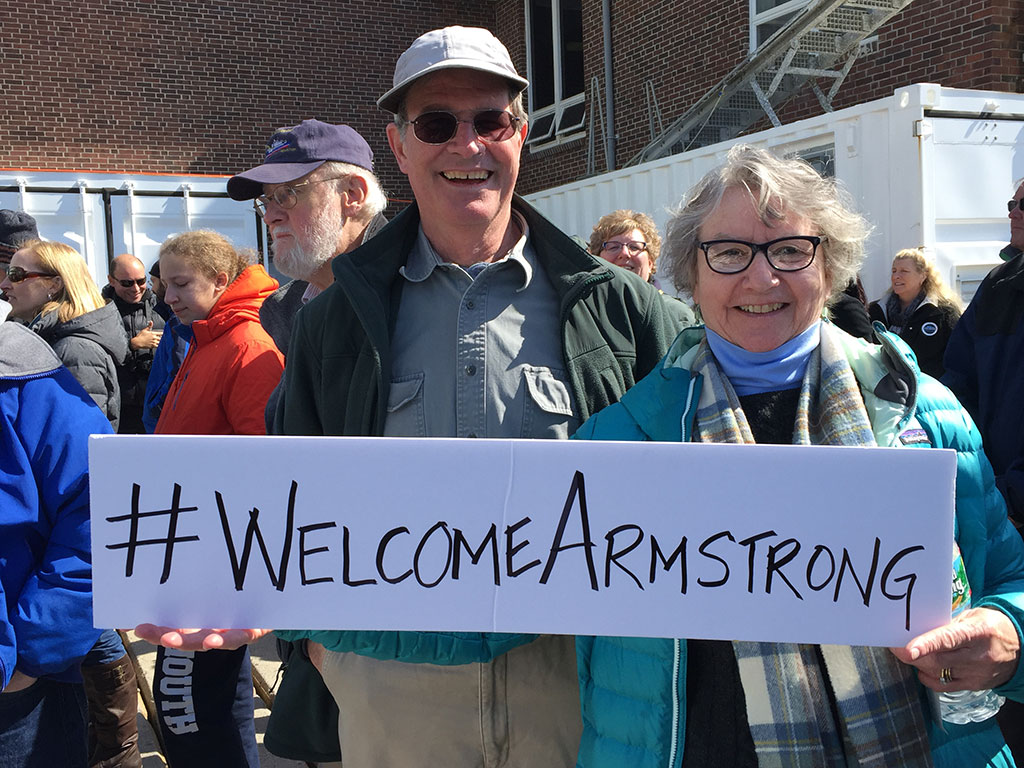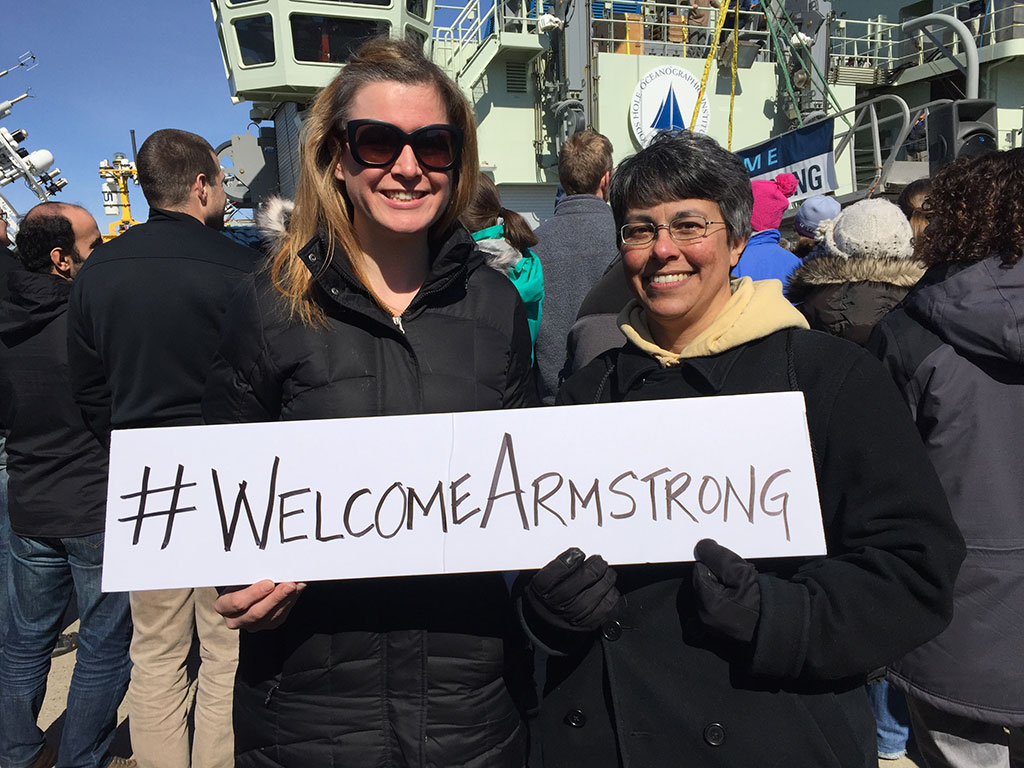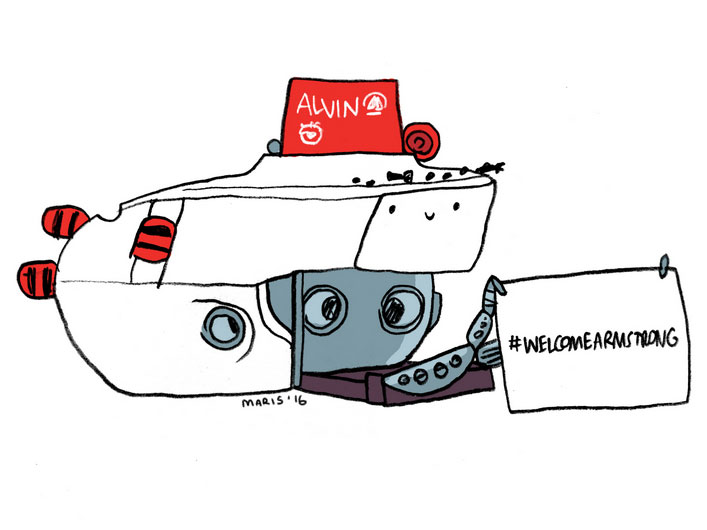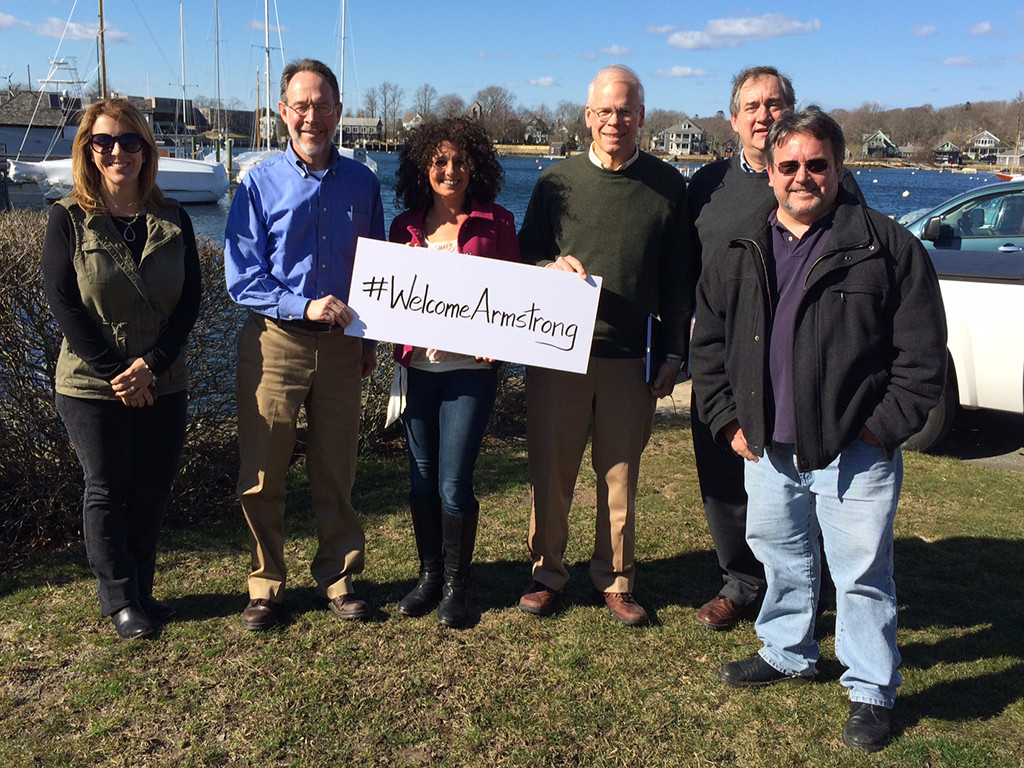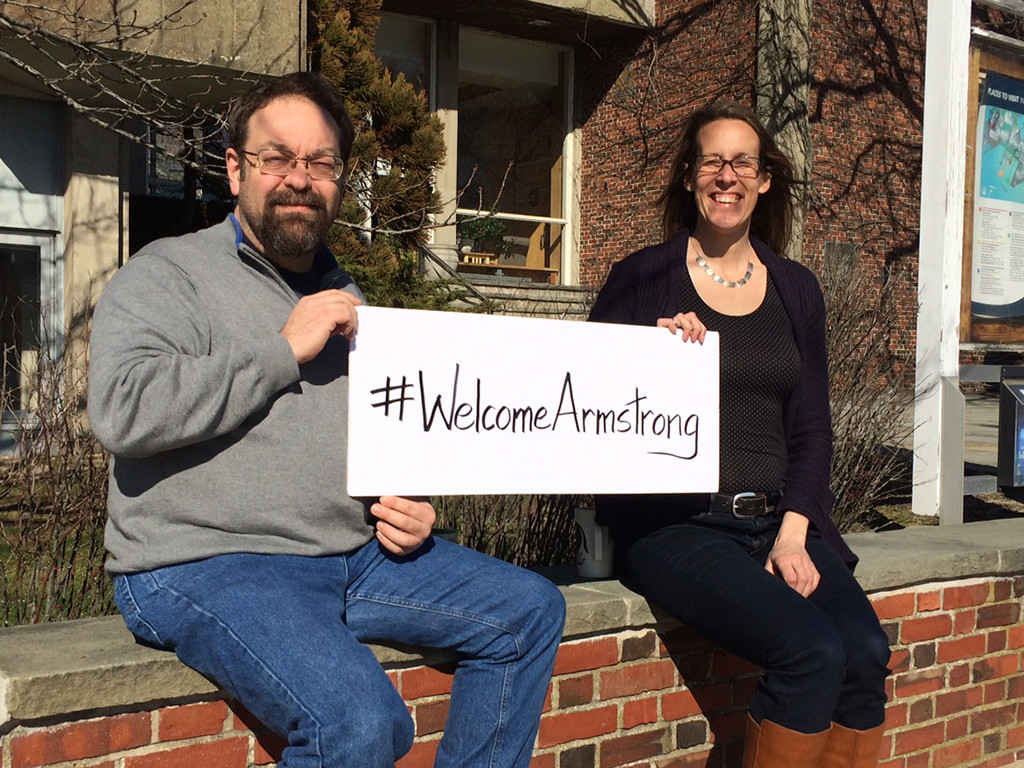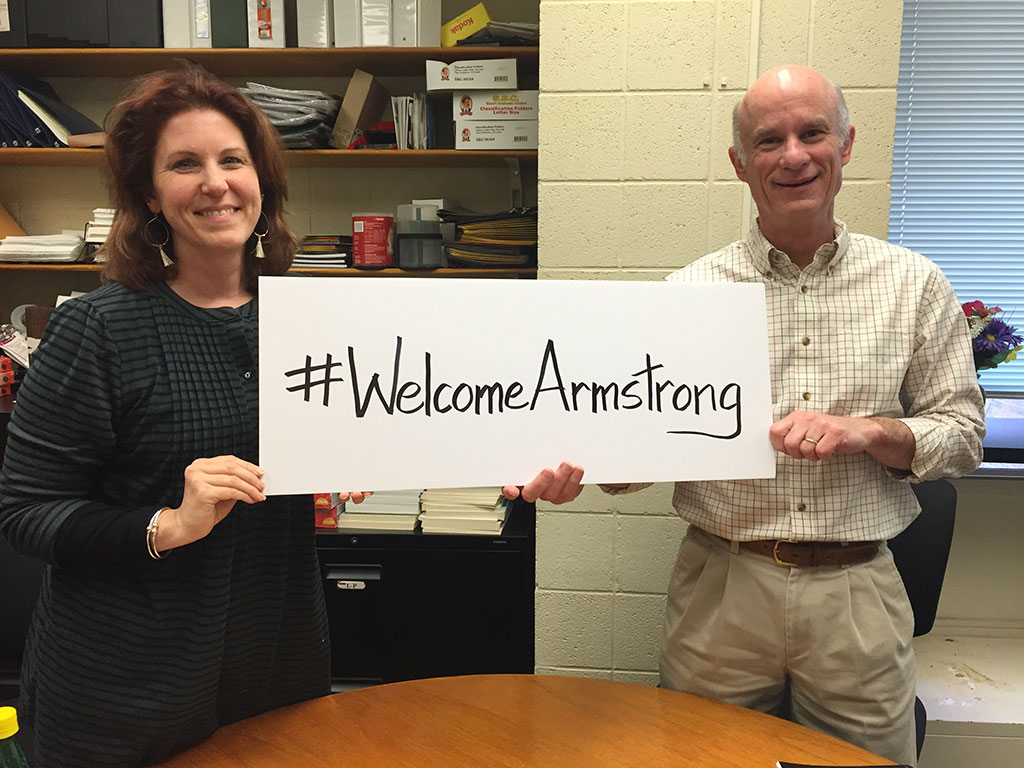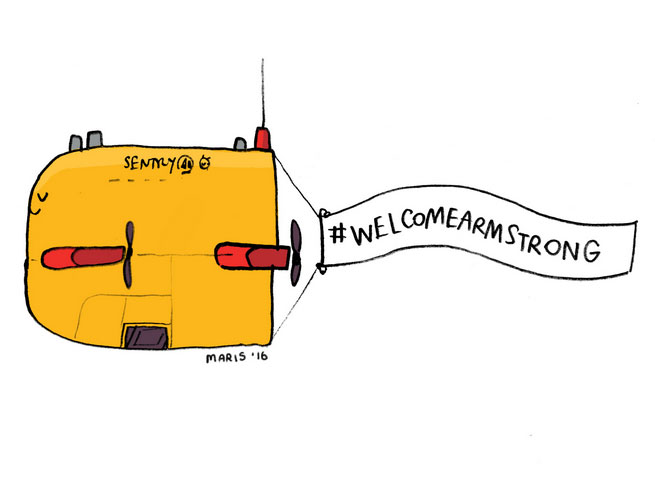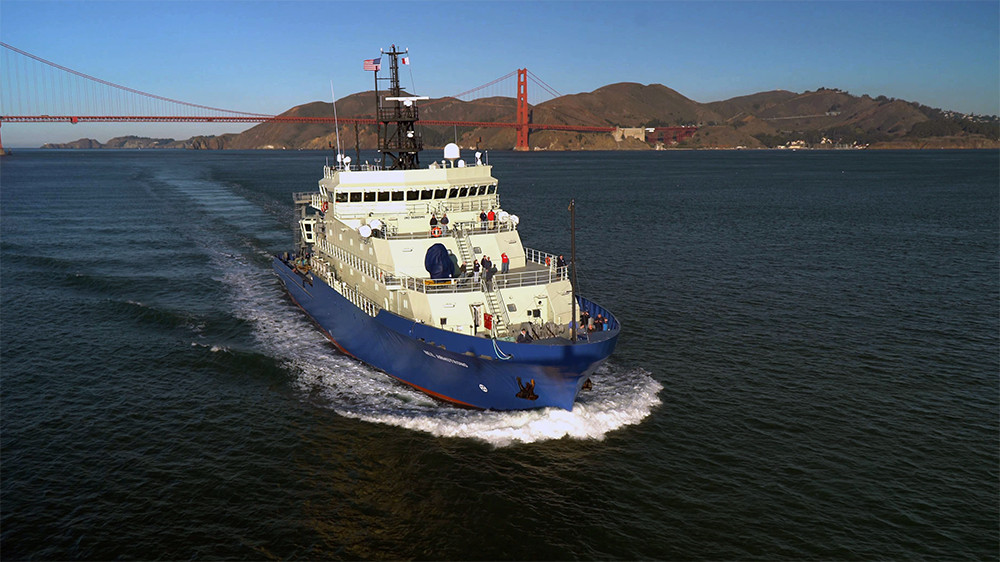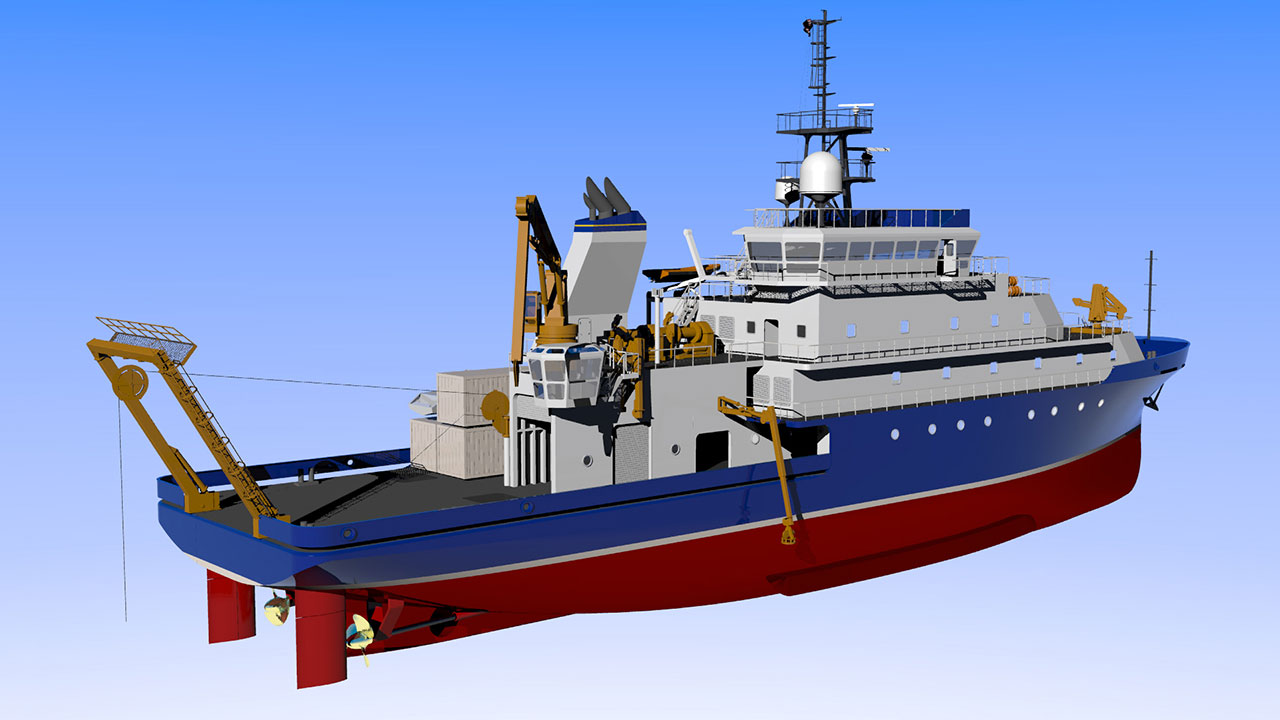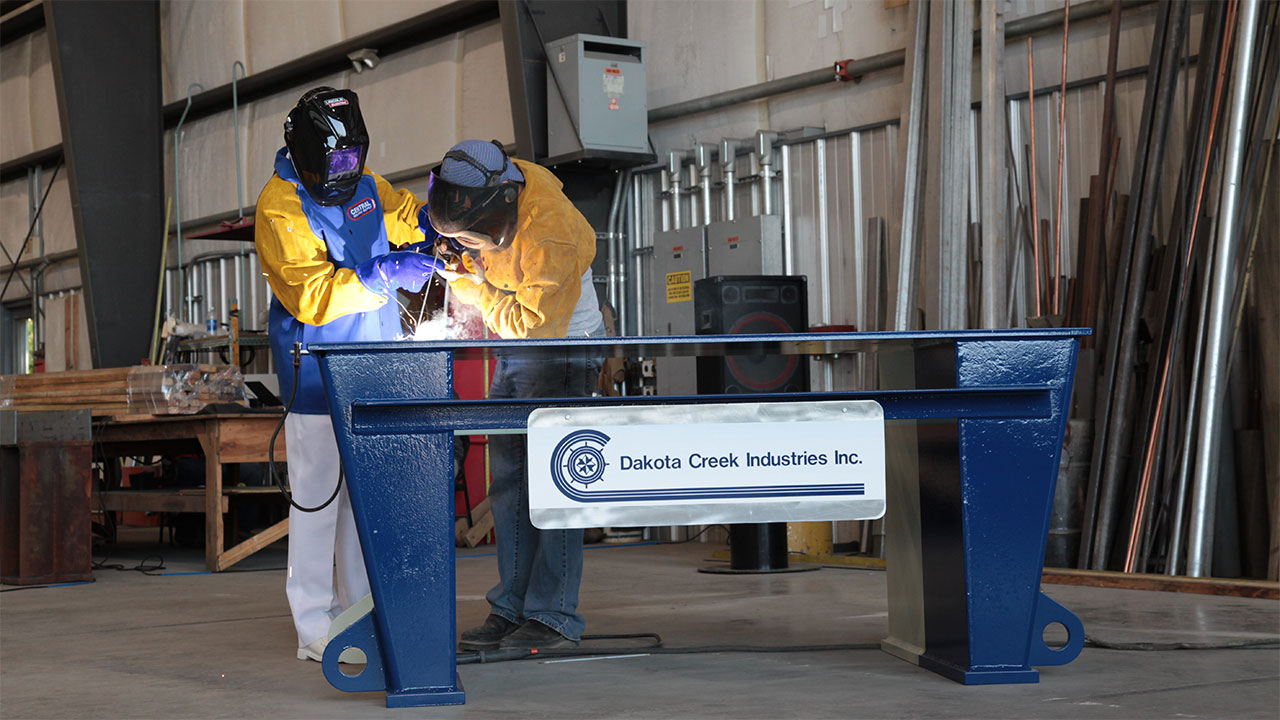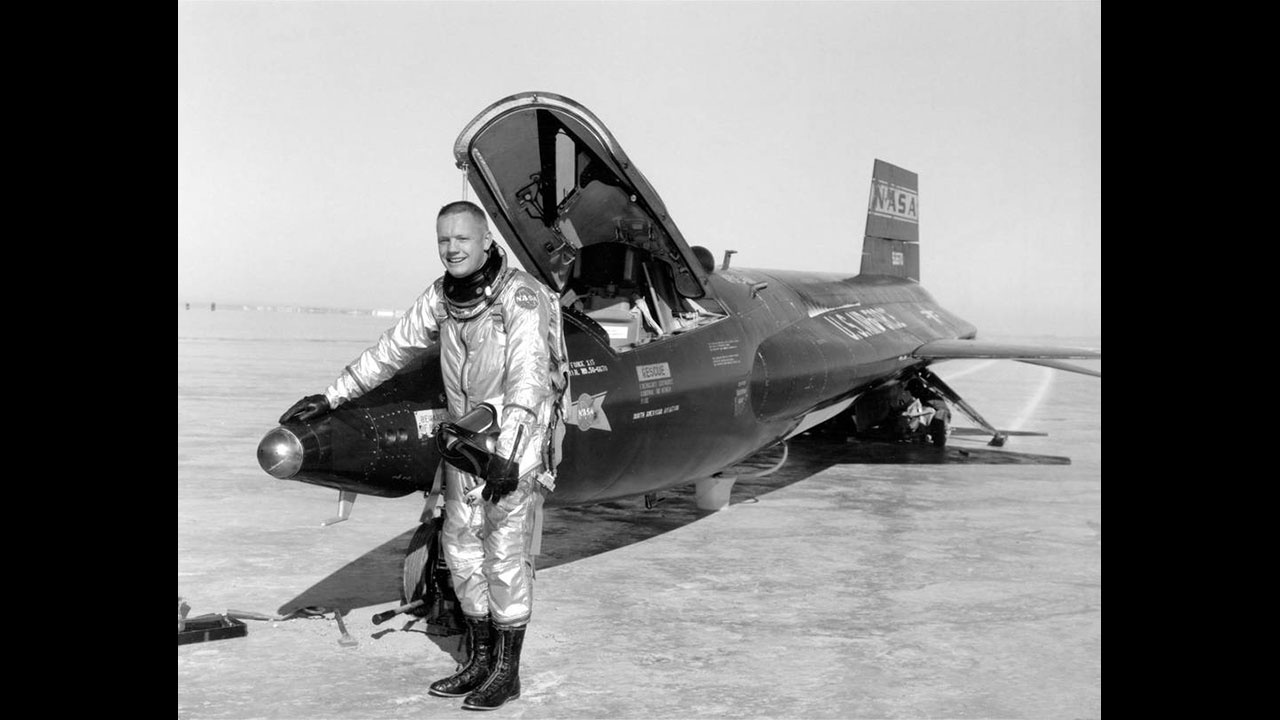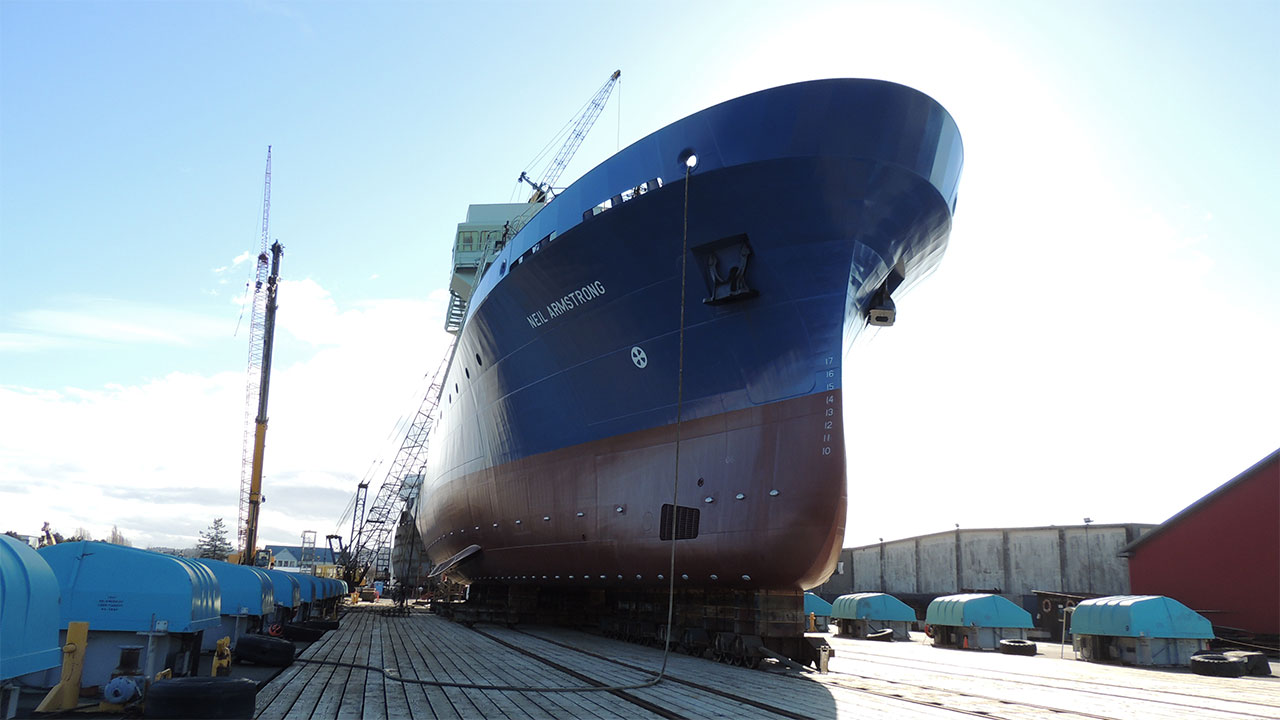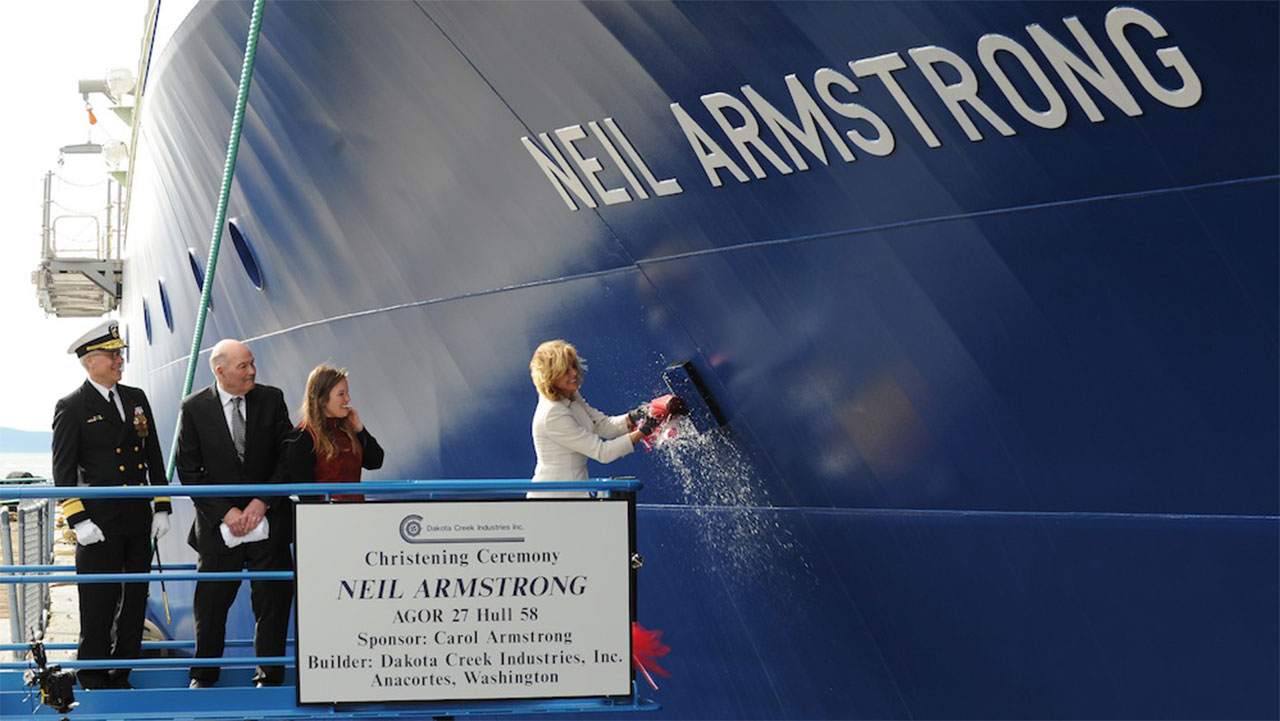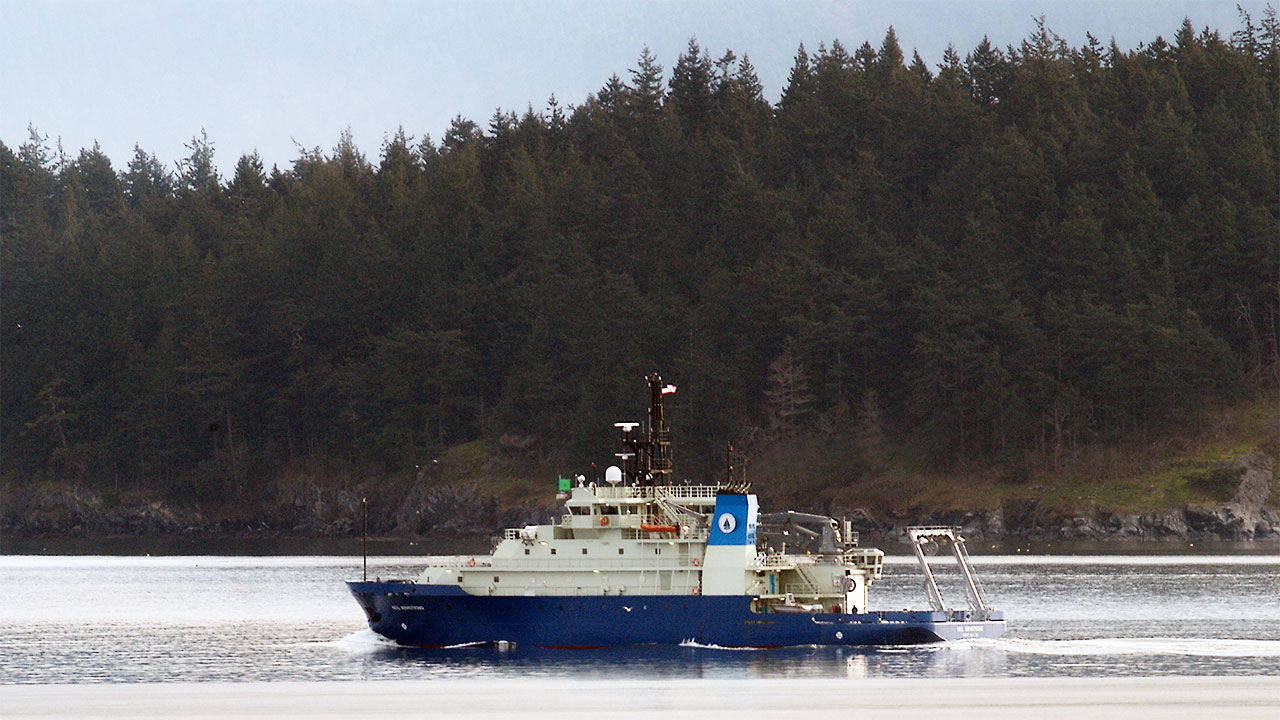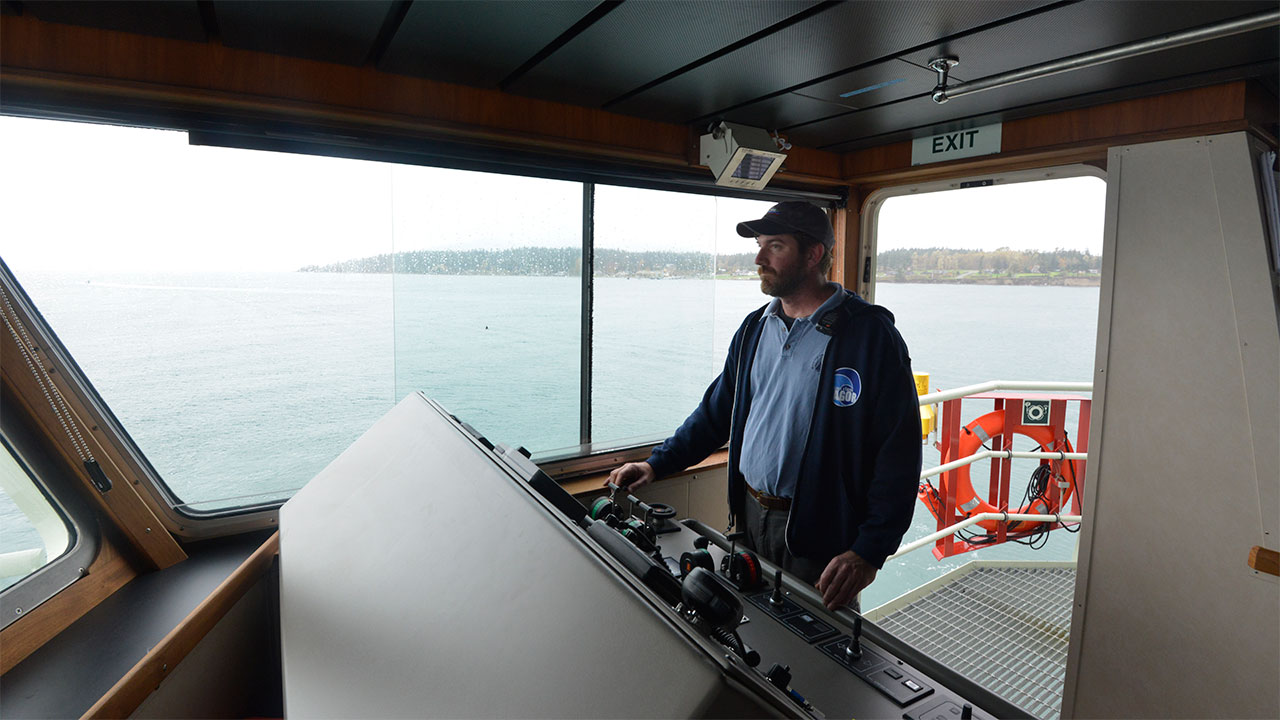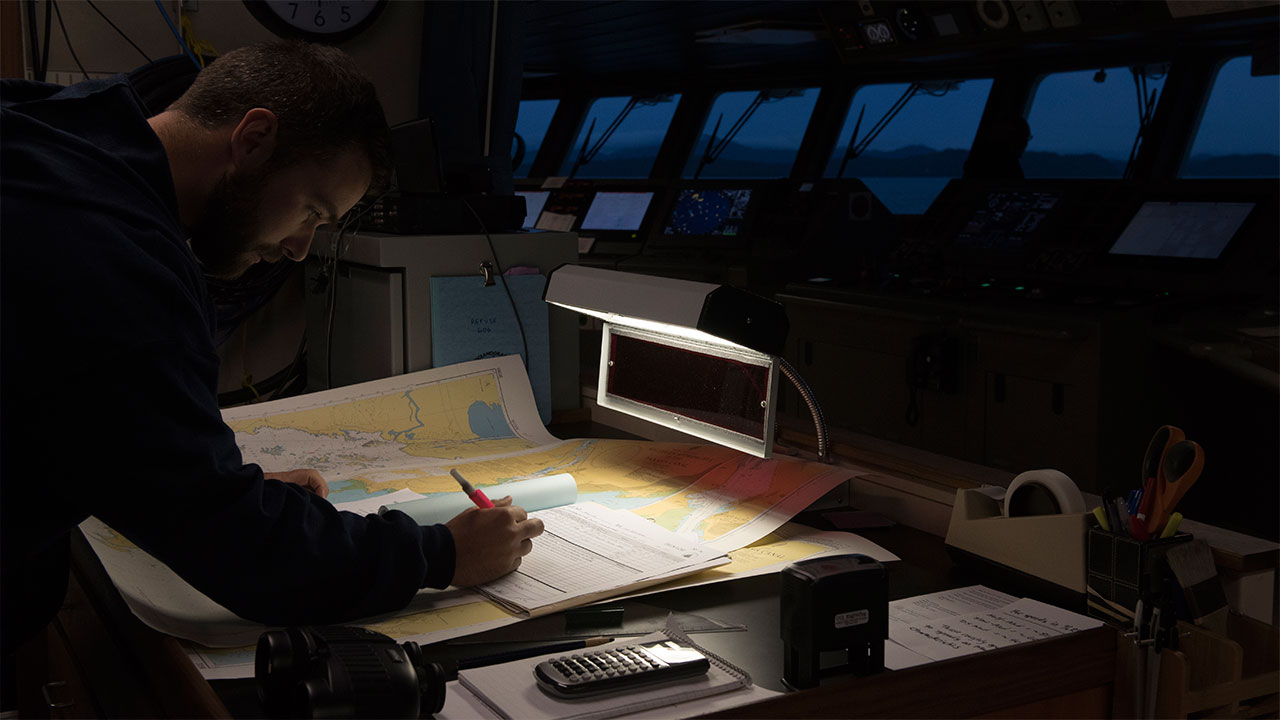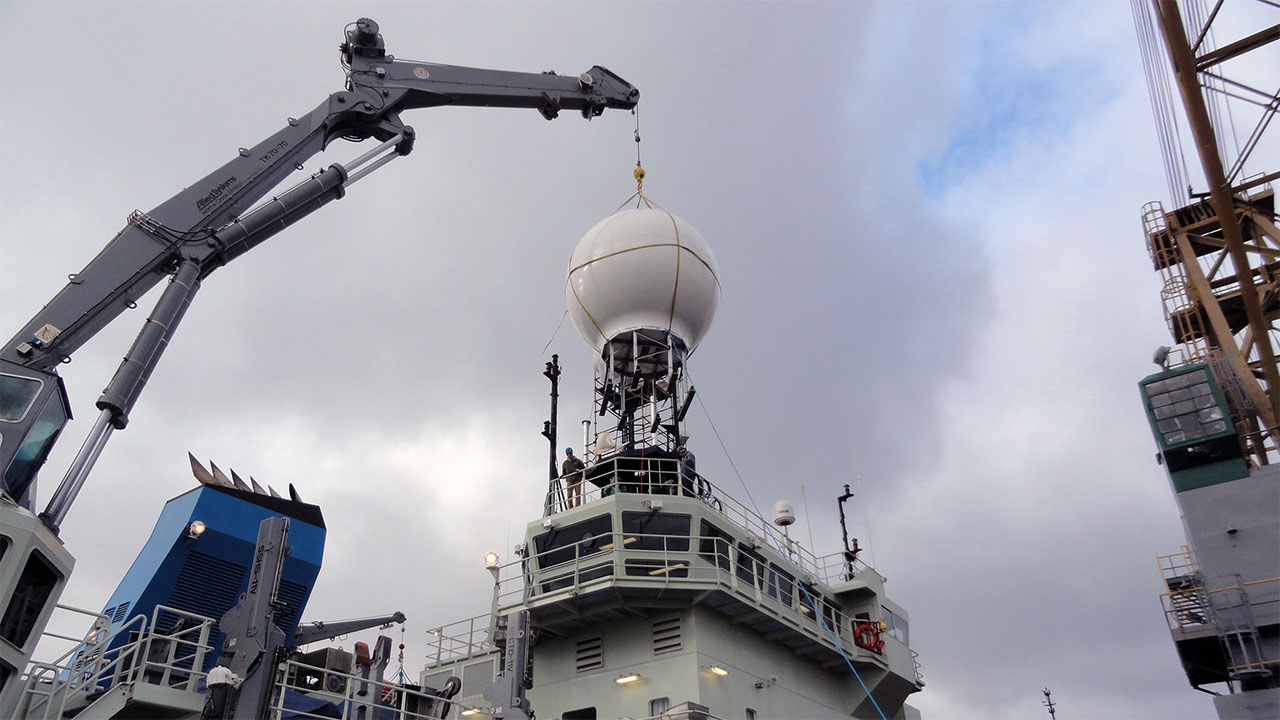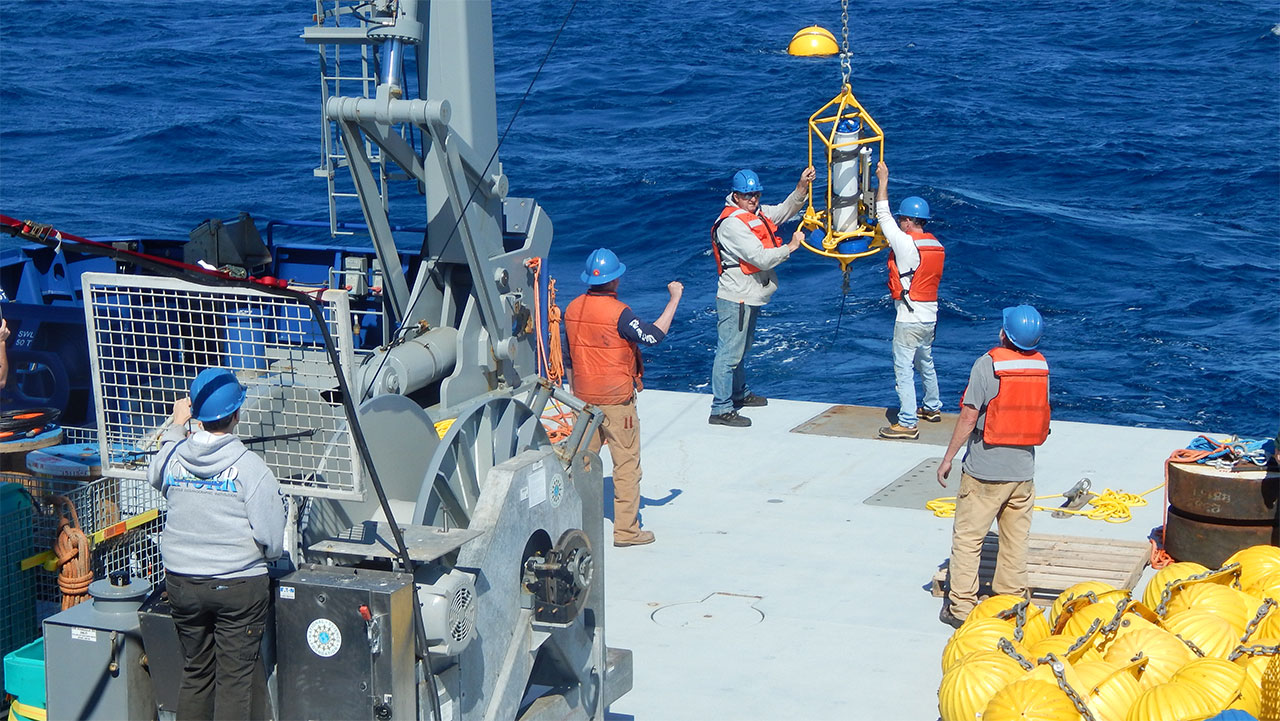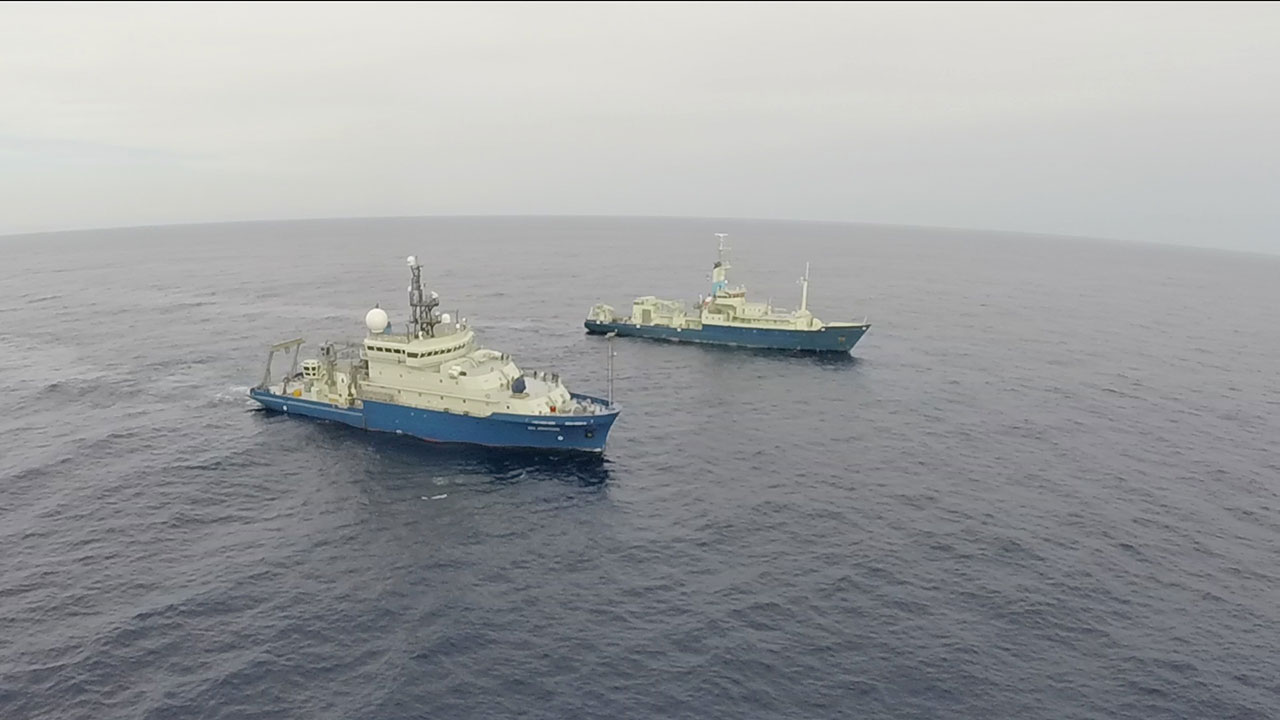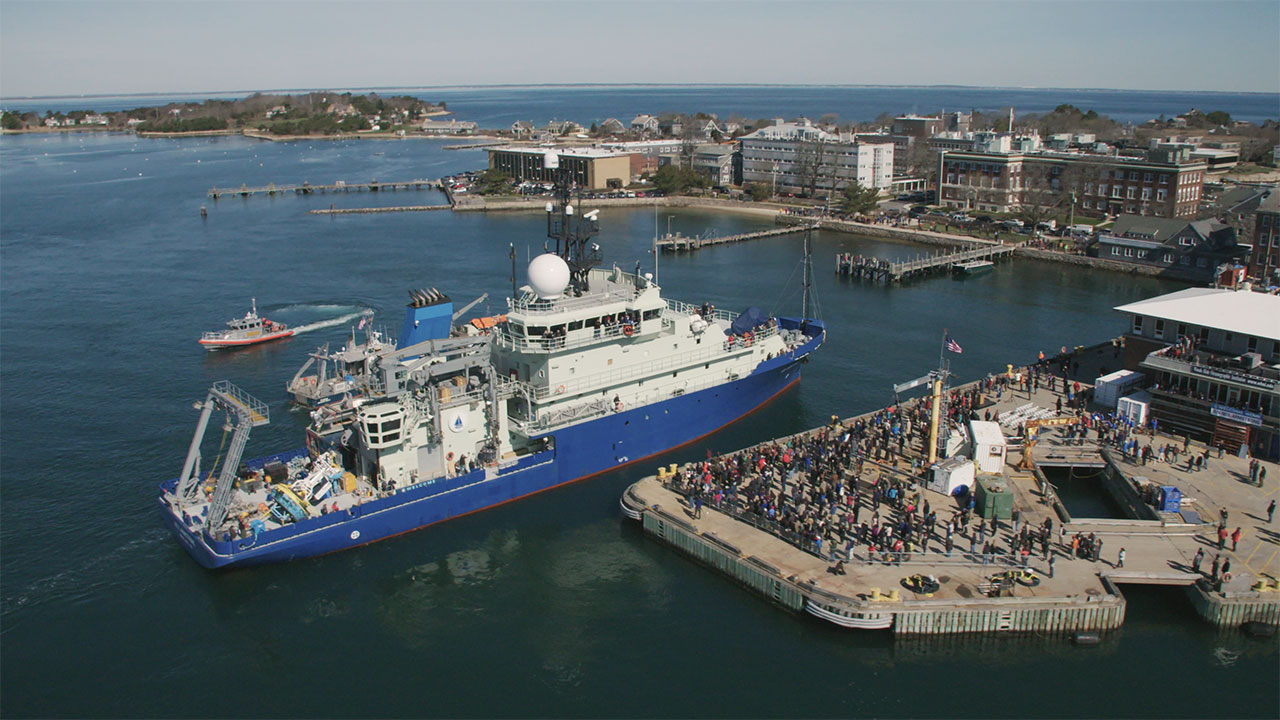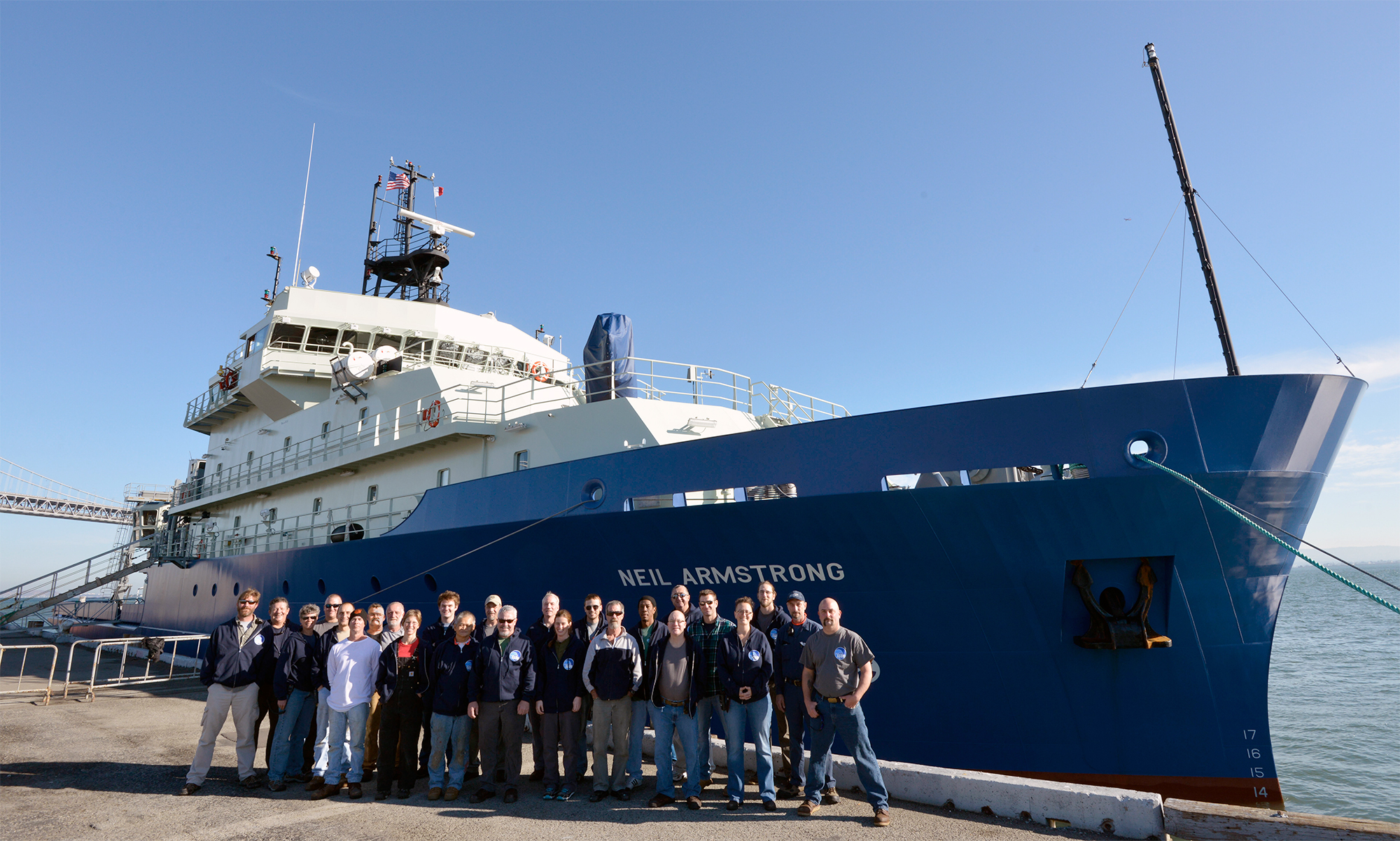Neil Armstrong
Welcome to New York City
R/V Neil Armstrong
Fleet Week 2017, May 24-26
Tour R/V Neil Armstrong
May 25, 10:00 a.m. - 12:30 p.m. • May 26, 10:00 a.m. - 12:00 p.m.
Intrepid Sea Air & Space Museum • Pier 86 (46th St. & 12th Ave.)
See inside one of the nation's most advanced oceanographic research vessels.
Meet scientists and crew who sail on the ship.
View underwater vehicles and other equipment used to explore the ocean.
Learn about the science and technology that is revealing new information about our planet.
Tours are free, but space is limited and available only on a first-come, first-served basis. Visitors to the ship must have a valid photo ID. Tours will last 20 minutes and require the ability to climb several flights of stairs. Please wear sensible shoes. No backpacks or strollers will be permitted on board.
Meet the ship
Neil Armstrong was built by the U.S. Navy to advance knowledge of the ocean and our planet. The ship can put to sea for up to 40 days with 44 scientists and crew and will be equipped to conduct advanced oceanographic research almost anywhere in the world. Neil Armstrong will be based in Woods Hole and operated by the Woods Hole Oceanographic Institution to provide scientists with the means to study the global ocean and its importance to life on Earth.
R/V Neil Armstrong in the North Atlantic
A new ship in town
Illuminating the ocean with sound
Sailors for science
Neil Armstrong may be a new ship, but its crew includes many old hands. Most transferred from Knorr, a ship and crew known for their ability to get the job done, even in difficult conditions. Learn more about the different crew positions and their roles in helping ensure the success of seagoing ocean science.
The man behind the name
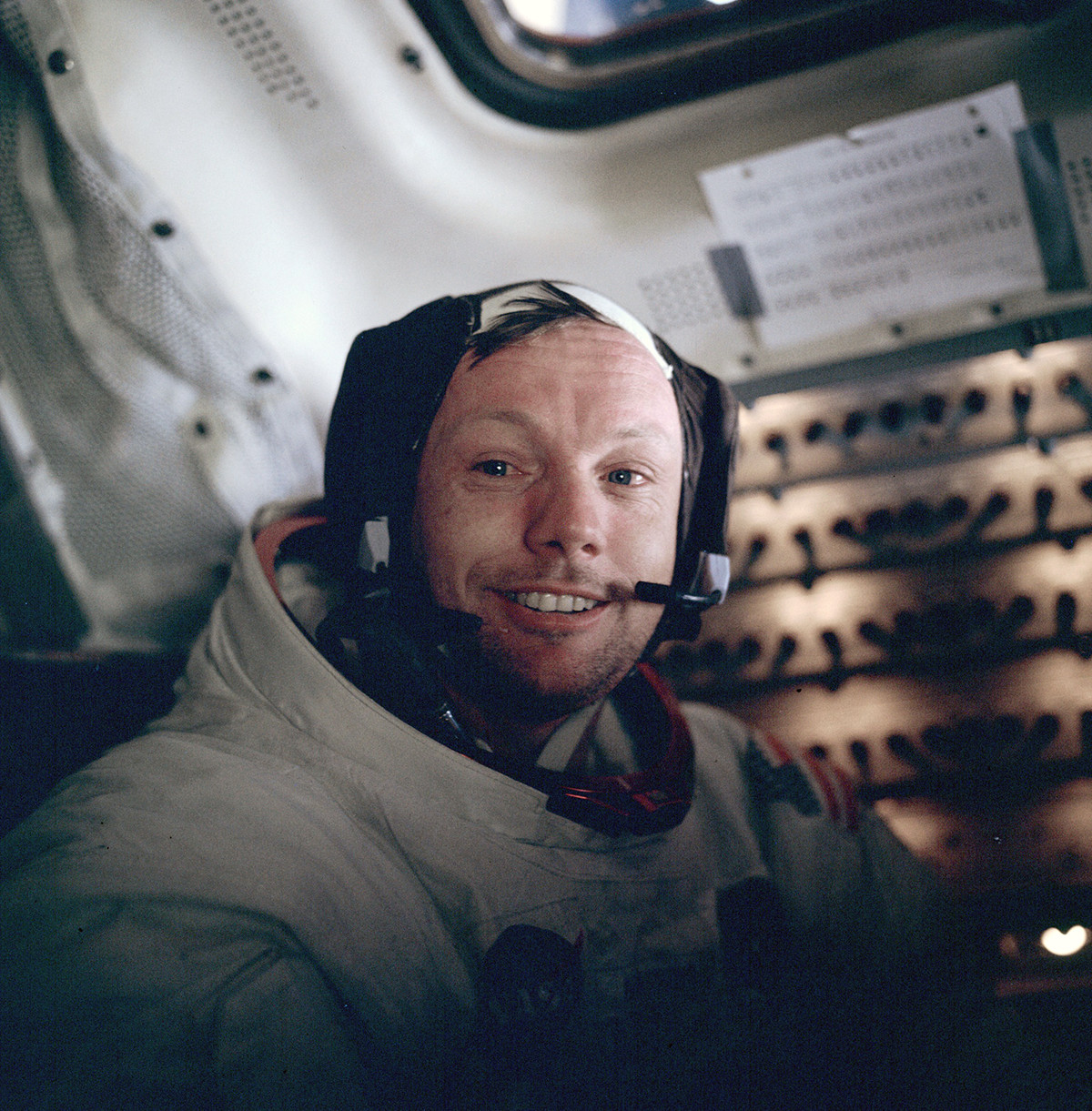
Neil Armstrong was a naval aviator, test pilot, and astronaut who pushed the boundaries of exploration. As the first human to walk on the moon, his view of our home gave us a greater appreciation of our place in the cosmos and a unique look at the oceans that cover 70% of Earth’s surface.
Armstrong’s legacy of exploration will continue with the ship that bears his name and in the scientists and crew who extend our ability to explore and understand Earth’s ocean frontier.
R/V Neil Armstrong is owned by the U.S. Navy and operated by the Woods Hole Oceanographic Institution through the University-National Oceanographic Laboratory System for the benefit of the entire ocean science community.
She’s a vessel with a heart of steel and a mission to expand the bounds of knowledge.
Kali Armstrong, granddaughter of Neil Armstrong

